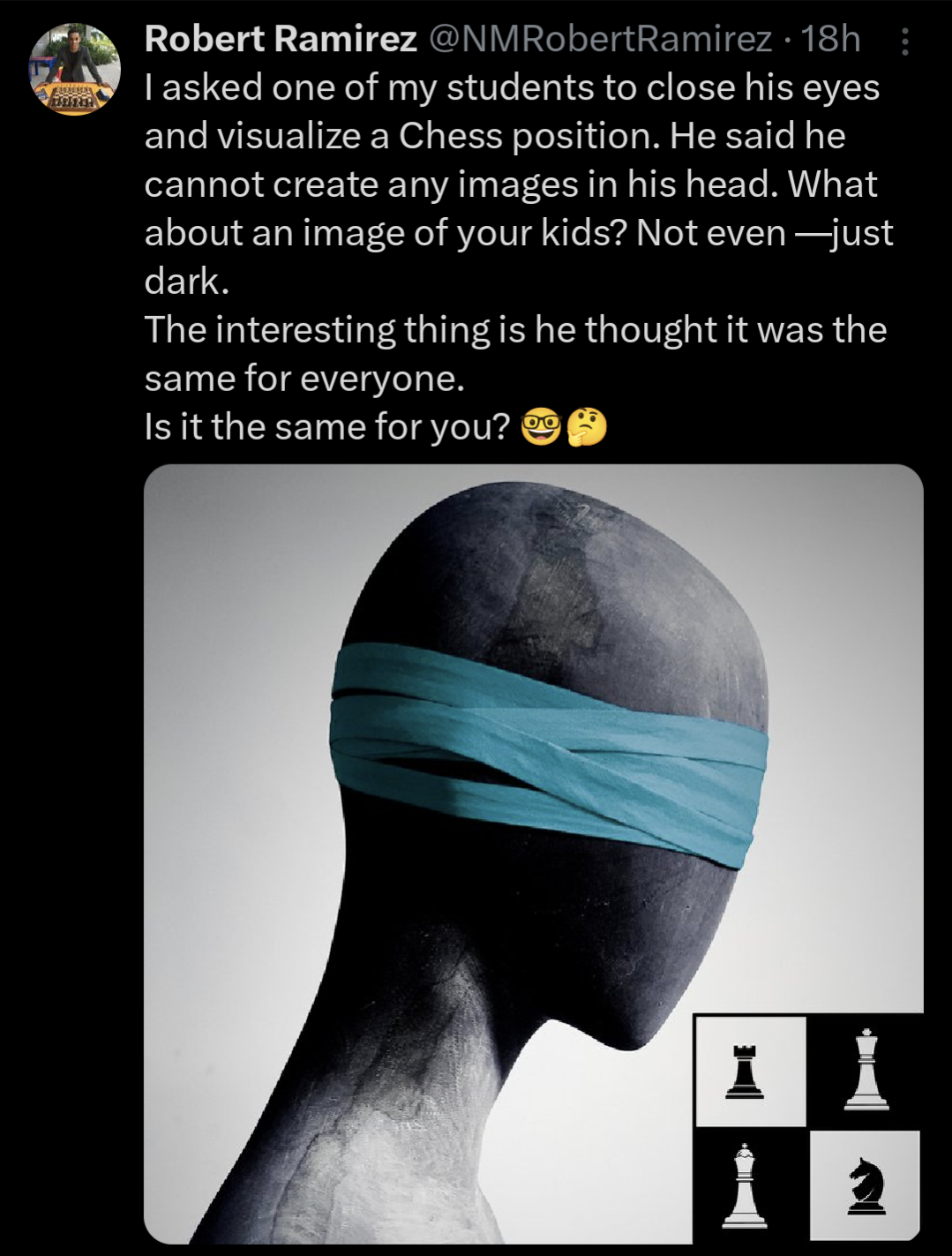this post was submitted on 17 Apr 2024
147 points (94.0% liked)
Chess
1985 readers
4 users here now
Play chess on-line
FIDE Rankings
| # | Player | Country | Elo |
|---|---|---|---|
| 1 | Magnus Carlsen | 🇳🇴 | 2839 |
| 2 | Fabiano Caruana | 🇺🇸 | 2786 |
| 3 | Hikaru Nakamura | 🇺🇸 | 2780 |
| 4 | Ding Liren 🏆 | 🇨🇳 | 2780 |
| 5 | Alireza Firouzja | 🇫🇷 | 2777 |
| 6 | Ian Nepomniachtchi | 🇷🇺 | 2771 |
| 7 | Anish Giri | 🇳🇱 | 2760 |
| 8 | Gukesh D | 🇮🇳 | 2758 |
| 9 | Viswanathan Anand | 🇮🇳 | 2754 |
| 10 | Wesley So | 🇺🇸 | 2753 |
Tournaments
September 4 - September 22
Check also
founded 5 years ago
MODERATORS
you are viewing a single comment's thread
view the rest of the comments
view the rest of the comments

This is a good theory but it doesn't really match the actual data. Aphantasia is a real thing-- some people cannot create mental images. A good test for this is the "Visualize an apple... what color was it?" test. You are right that language is a major barrier to describing your internal experience, and this likely causes a lot of false positives and negatives, but there are ways to get around that. Also, I've never heard of someone actually confuse mental imagery for a true visual stimulus, and misrepresenting mental visualization in that way is... strange, at minimum.
While that's true, the apple test is terribly communicated. The middle stages of the visualization spectrum between no imagery and hyperphantasia are very easily misinterpreted. No one sees a blurry, washed out apple, the details just need to be in conscious focus to be present.